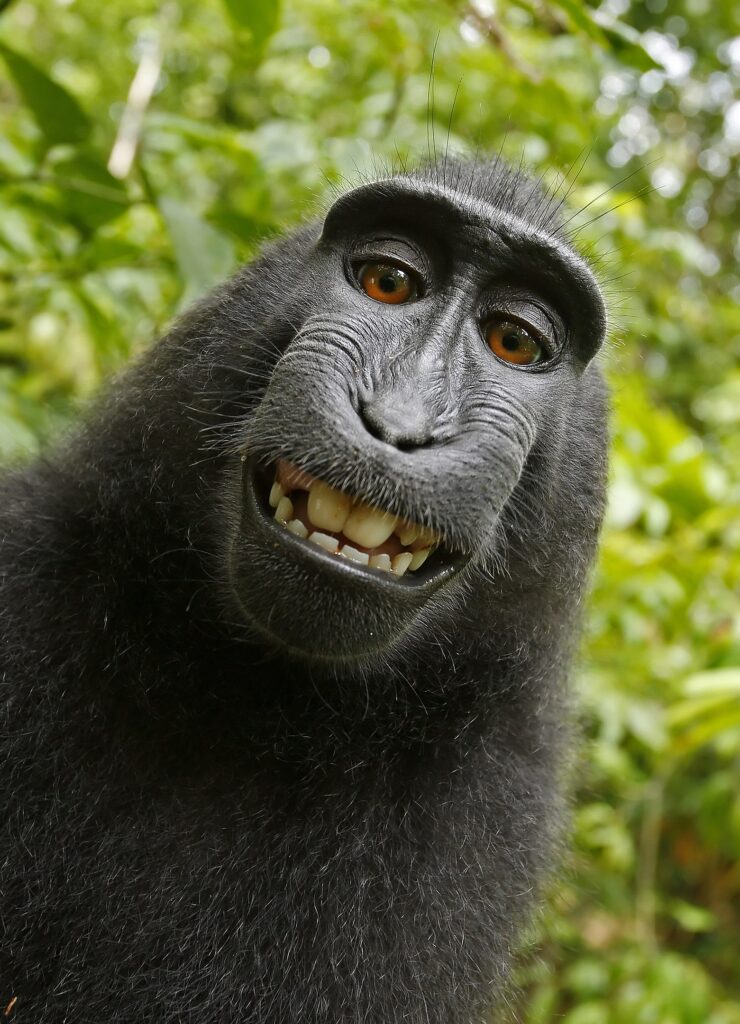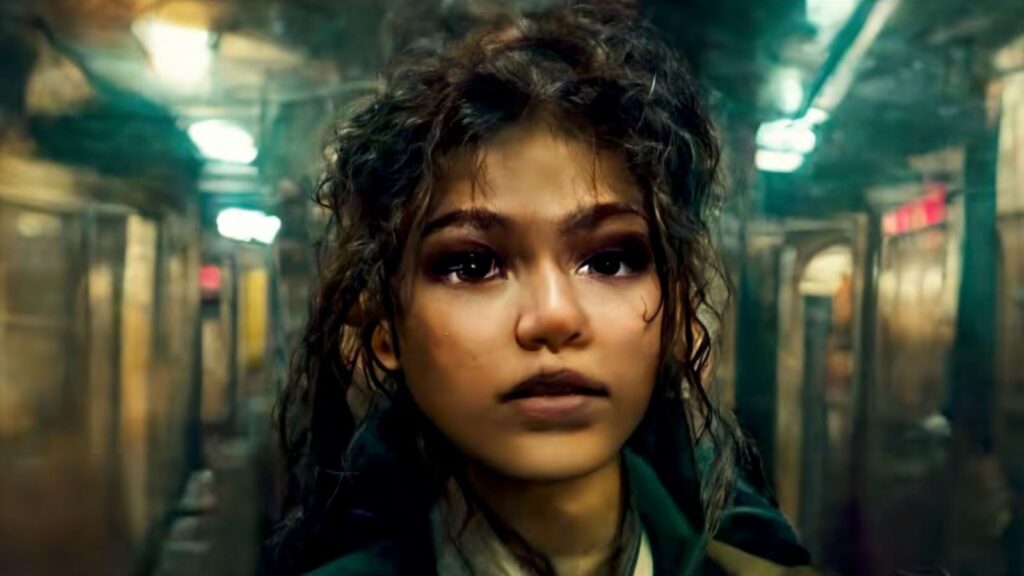In my last post, we went over the recent rise of images generated by artificial intelligence (AI), how they work, and some of the legal risks of using AI assets in video games.
There are many legal questions surrounding this, including unsettled ones like whether or not incorporating copyright-protected art into an AI model as training images is infringement.
However, we stopped short of digging into one of the biggest potential problems with using AI-generated assets in your game, which is the copyright issue. The big problem is that you may not even have the protections of copyright in the AI-generated assets used in your game. In fact, it’s very likely that nobody does. It all goes back to a monkey.
Can You Use AI-Generated Images in a Commercial Project?
The threshold issue that you’ll have to address when using AI-generated images is whether or not the AI generator permits it in the first place. When creating a commercial product, like a video game, you should be aware of the license agreement of any tools you use.
Some AI tools may have restrictions on the use of their output images which prohibits their use in a commercial setting, while others may not be able to give such a license to their users due to the data set that they were trained on, as we discussed in the last article. Always make sure that the tools you are using permit commercial use before you build your workflow around them. This will vary from tool to tool, look at the license agreement for the tools you’re using.
Can AI-Generated Art Have A Copyright?
Even if the tool you’re using permits commercial use, the question still remains as to whether or not a copyright in AI-generated assets can even exist. Remember that copyright vests in the creator of a work, except in cases where the work is a “work made for hire” or where the work is made by multiple creators and it is a joint work.
But what happens when the author isn’t a legal person? What happens when a machine creates something?
You would think that there would be very little legal precedent here since AI is a relatively new field, but there is a precedent for non-humans creating art. For that, we have to look at the famous monkey selfie case.

In the case of Naruto v. Slater,1 PETA, on behalf of a macaque named Naruto, sued photographer David Slater. Slater set up a camera on a tripod that a monkey named Naruto was curious about and clicked a few photos with. PETA claimed that Slater was infringing on Naruto’s copyright by using the photos in Slater’s book “Monkey Selfies.”
The court ruled for Slater and dismissed “Naruto’s” claim, reasoning that “copyright law only protects ‘the fruits of intellectual labor’ that ‘are founded in the creative powers of the mind’” and that this does not include “works produced by a machine or mere mechanical process that operates randomly or automatically without any creative input or intervention from a human-author.” [italics added]
This case held that copyright only protects human creations, and not those made by monkey or machines. This has been held ever since. In order to be eligible for copyright protection, a human must create the work.
The US Copyright Office’s Opinion on AI Art
The US Copyright Office issued a statement of policy in March 2023 applying this case and others to AI-generated works, concluding that only human authors are protected and that a human simply giving a prompt to an image generator is not enough to qualify.
A visual novel titled Zarya of the Dawn applied for copyright registration but did not disclose that it used images generated by Midjourney. The copyright office later retroactively cancelled the registration, issuing a more limited registration only applying to the “text and the selection, coordination, and arrangement of text created by the author and artwork generated by artificial intelligence.”

While there isn’t much doubt that you could use some sort of AI assistance, including some of the tools found in programs like Photoshop, and still qualify for copyright protection, there’s currently no bright line as to what degree of human input and creativity is required to qualify for a copyright.
While the copyright office limited the protections over Zarya, it is possible that you could get protection over something more involved. For example, creating an album cover by taking the original AI output and extensively editing it to not only correct the quirks of the model’s understanding of human anatomy but also to add artistic and stylistic choices would likely receive greater protection.
The Copyright Office has since decided that AI generated content can receive some degree of copyright protection, it just has to have a human substantially contribute or change the content in question. An element of human creativity is the key here, but there’s no set amount that’s required, and any bright-line rule would be impossible.
All that has been decided to this point is that copyright only protects human-created works, not those created by programs. Documenting your processes may help if there is any doubt as to the extent that human minds contributed to the work in question.
While other people using a background or other small visual asset may not seem like a big deal, it can get problematic if you rely too much on something more central to your game like AI-generated code or other essential assets. The implications are potentially large, so always make sure your work can be protected. Right now it seems that AI art on its own isn’t protected by copyright, and it’s not clear where the line of human input is.
Unintentional Infringement- The Black Box Problem
Obviously copyright infringement is not a good situation for a game developer to be in. It opens you up to potential liability by the copyright holder. But what about unintentional infringement, where you were unaware of the infringement taking place? AI art generators are a black box. That means that an input goes in (like a prompt) and an output comes out (like an image) without really being able to know what happens internally. What latent images were used? What process was used to generate the image? There’s really no way to find out.
This poses problems for copyright law. If you use AI-generated assets in your work, your work may unintentionally infringe on existing characters and trademarks without even realizing it. The actual AI image generator may be infringing – depending on what courts find – by incorporating protected art and you may be secondarily liable for the infringement.
Since the generator is a black box, there’s no way to show what was or was not incorporated into the output, so it is conceivable that any artist whose work makes up the training images may have a case against someone using the output assets. In addition, the final output asset could be infringing on existing trademarks and copyright, which you would most certainly be liable for.
Remember that copyright protects everything from visual art, to music, to written works, to specific characters.
If an AI art program incorporates any of these elements into your assets, like a specific character or the logo for a company, then you may find yourself liable for using these assets in your work. You don’t want to be in a situation where a large company like Disney ends up finding their IP in your game without you realizing it, or having their art incorporated into the model you’re depending on. The fact that AI image generators are a black box makes these challenges all the more risky.
Conclusion
There’s a lot that’s changing and developing in this space, so anything could change here. Only recently have companies like Steam taken a stance regarding AI and copyright on their platforms. As a developer, you want to make sure that your IP is protected and that you’re not unintentionally infringing on someone else’s IP.
With AI art, many new potential issues stem from oversights like using generative work that can’t be protected by copyright, or unintentionally infringing on intellectual property because you can’t see how AI is generating images. As with any developing technology, take caution. You don’t want your workflow to rely on IP or other legal problems that could change under you.
- Naruto v. Slater, No. 16-15469 (9th Cir. 2018) ↩︎

Leave a Reply